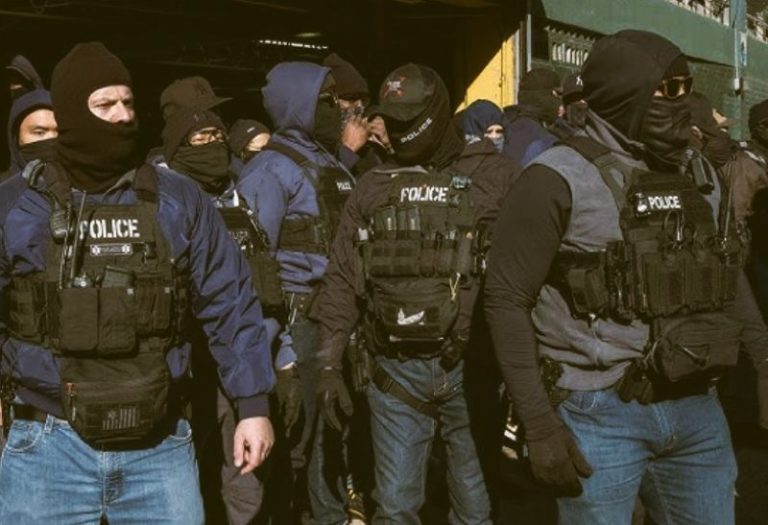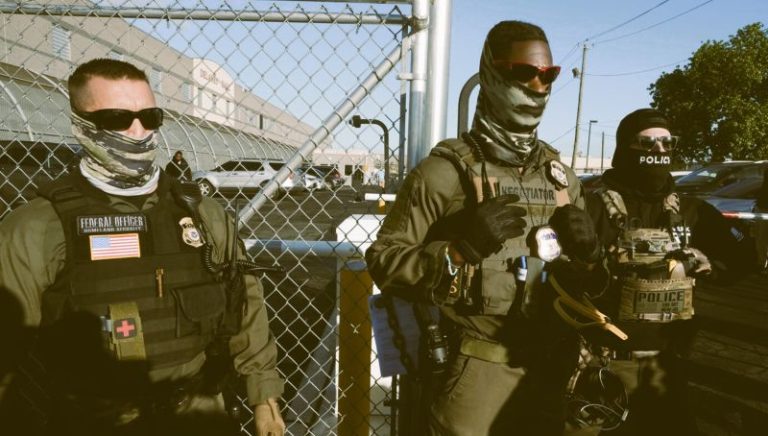

The ceasefire may indeed hold, and if it does, lives will be spared. But the cost of keeping it may once again be measured in American uniforms.

By Matthew A. McIntosh
Public Historian
Brewminate
Introduction
President Donald Trump has announced what he calls a “historic breakthrough,” a negotiated ceasefire between Israel and Hamas that he says will “end the bloodshed and begin a new chapter of peace.” The deal was brokered under President Biden, but Trump has added the deployment of roughly 200 U.S. troops to Israel to “support and monitor” the agreement’s implementation. The contingent will help coordinate humanitarian relief and oversee the movement of both Israeli and Palestinian forces during the transition period.
The move has stunned even some of Trump’s allies, rekindling memories of the long U.S. military entanglements that defined the early twenty-first century. After two decades of war in Iraq and Afghanistan, many believed the American public’s appetite for deploying troops to the Middle East had vanished. Yet here it is again, boots on the ground, this time under the banner of “peace enforcement.” While administration officials insist the troops will not enter Gaza itself and will serve only as a stabilization presence, the mission’s scope remains vague, and its risks unmistakable.
The ceasefire is, on its face, a diplomatic success, hostages are expected to be exchanged, aid convoys prepared, and both sides appear ready for a fragile pause in violence. Sending American troops to secure that pause could turn a tenuous truce into a potential flashpoint. History has shown that U.S. deployments framed as limited or symbolic can quickly expand into costly, open-ended commitments. Trump may claim a triumph of negotiation after Biden’s work, but the decision to plant even a small American footprint in one of the world’s most volatile fault lines risks turning peacekeeping into provocation.
What’s Actually Being Proposed / Promised
The ceasefire agreement, announced after days of tense back-channel negotiations involving Egyptian, Qatari, and U.S. envoys, outlines a temporary halt to hostilities between Israel and Hamas, the release of hostages, and the gradual withdrawal of Israeli ground units from Gaza’s urban centers. The deal also establishes several humanitarian corridors and relief zones, allowing aid agencies to deliver food, medicine, and fuel to a population battered by months of conflict.
At the heart of Trump’s plan is the deployment of about 200 American troops to Israel. Officially, they are to serve in a “monitoring and coordination” capacity, helping to verify compliance with the ceasefire, facilitate communication between Israeli forces and international observers, and ensure that humanitarian aid is not obstructed. Pentagon officials have emphasized that these troops will not operate inside Gaza itself but will be stationed at coordination centers within Israel near the border. Still, such proximity effectively places them inside the theater of potential escalation, where even a misfire could ignite a wider confrontation.
Trump’s broader peace initiative, what aides are calling the “Trump Stabilization Framework,” envisions the eventual creation of an international security force composed of American allies and regional partners, including Egypt and the United Arab Emirates. No concrete commitments have been made by those states, leaving the U.S. as the de facto guarantor of the truce. Vice President J.D. Vance sought to allay fears by stating that the United States will not be engaged in combat operations and that our role is to keep the peace, not police it. But the distinction between peacekeeping and enforcement has often blurred in practice, especially in regions where combatants see foreign soldiers as either leverage or targets.
The ceasefire is, for now, holding. But the logistics are precarious. Hamas’s fragmented command structure, internal Israeli divisions over the government’s concessions, and the sheer volatility of Gaza’s postwar landscape make the mission’s success uncertain. Each of those factors amplifies the danger of escalation and makes the presence of American personnel a gamble that peace can be maintained by proximity rather than principle.
Historical and Strategic Risks
The decision to reintroduce American troops, however few, into the Middle East echoes a long and costly pattern of intervention that successive administrations vowed to end. From Lebanon in 1983 to Iraq in 2003 and Syria in the 2010s, U.S. forces have repeatedly been drawn into conflicts they were never meant to fight. The stated objectives were always narrow: stabilization, deterrence, or humanitarian support. Yet history has shown how “limited missions” can rapidly expand once blood is spilled or alliances shift. The troops Trump is sending will operate “strictly in a support and monitoring role,” but those same assurances were once made about advisers in Vietnam and observers in Somalia.
Even a token American presence introduces a new variable into an already unstable equation. The Middle East remains a dense web of rivalries: Iran’s Revolutionary Guard influences proxy militias in Gaza and Lebanon; Hezbollah remains poised along Israel’s northern frontier; and internal Israeli politics are deeply fractured between far-right hawks and those seeking de-escalation. A single incident (a rocket gone astray, a misinterpreted movement across a buffer line, an ambush by a rogue faction) could quickly pull the United States into a conflict of its own making.
The region’s geography also compounds the danger. Unlike prior peacekeeping missions with multilateral backing and well-defined boundaries, this deployment lacks both a United Nations mandate and a multinational force structure. It will place American troops adjacent to active combat zones without the legitimacy of a clear international framework. That ambiguity makes them both symbol and target: a symbol of U.S. authority to allies, a target of opportunity for extremists who view foreign soldiers as an occupying force.
Beyond the battlefield, there are strategic costs. Every re-engagement undermines Washington’s stated pivot toward Asia and domestic renewal. It diverts attention, resources, and credibility from long-term strategic priorities in favor of short-term optics. In effect, Trump’s gambit risks repeating the cycle that presidents from both parties have struggled to escape, declaring peace while sowing the seeds of another open-ended presence.
The United States has learned, at staggering cost, that in the Middle East there are no truly temporary deployments. There are only temporary illusions of control.
Arguments and Concerns
To Trump’s supporters, the deployment is a bold assertion of American leadership, a visible guarantee that Washington will not stand idle while chaos threatens its allies. Yet to critics, it represents precisely the opposite: the return of a reflexive militarism that has drained American credibility and treasure for decades. The administration’s insistence that the troops are “non-combat” sounds familiar to those who remember the early stages of Iraq and Afghanistan, when advisers, trainers, and support units soon became combatants by necessity rather than design.
Analysts have warned that even a symbolic U.S. military presence in Israel risks blurring the line between broker and belligerent. Deploying troops “to support” the ceasefire implicitly places them within the orbit of Israeli command decisions, a position that could make them complicit if operations resume or civilian casualties mount. The same critique has long haunted American forces in other proxy conflicts, where moral lines were drawn in briefing rooms but erased on the ground.
There is also the problem of perception. For Palestinians, and for much of the Arab world, the arrival of U.S. troops will be seen not as peacekeeping but as occupation by proxy, a reinforcement of Israel’s position under the veneer of neutrality. In such an environment, every uniformed American becomes a symbol of U.S. policy itself, and symbols are easily targeted. Extremist factions, eager to derail any stabilization effort, need only one successful attack to transform the mission from diplomatic success to national tragedy.
Strategically, this move exposes a dangerous overconfidence: the belief that American presence alone can impose stability where political solutions have failed. It substitutes visibility for diplomacy and force projection for trust-building. Without a defined end state (no timeline, no measurable benchmarks, no multilateral oversight) “monitoring” can quietly evolve into “managing,” and managing can become enforcing. That progression is how occupations begin, not how they end.
The irony is that Trump’s stated goal, to secure peace through strength, may achieve the opposite. By positioning American troops between two populations still smoldering from war, Washington risks inheriting a conflict that is not its own, defending an agreement that may not hold, and reigniting a chapter of Middle Eastern intervention many believed was finally closed.
Counterarguments and Challenges
The Trump administration defends the deployment as both measured and necessary. Officials argue that the U.S. presence lends credibility to the ceasefire and prevents spoilers, particularly Iranian-backed militias or rogue Hamas cells, from collapsing a fragile truce. Trump framed the move as a “peace guarantee,” asserting that without American coordination, “no one trusts the process, and no one keeps their word.” In his view, only the United States possesses the diplomatic leverage and logistical capability to maintain the balance between Israeli caution and Palestinian desperation.
Supporters of the policy point to the limited scale of the mission, roughly 200 troops stationed in secure zones within Israel, as evidence that this is not Iraq 2.0. They emphasize that these soldiers will not cross into Gaza, will not patrol conflict areas, and will operate under strict orders of non-engagement. In this narrative, American forces function less as combatants and more as referees, facilitating aid deliveries, verifying withdrawals, and reassuring regional partners that the ceasefire is not a mirage. Some military strategists suggest that even a symbolic American presence can deter escalation, precisely because no actor wishes to risk direct confrontation with U.S. forces.
There are also those who view the mission through a humanitarian lens. If the presence of American personnel can keep aid corridors open and prevent renewed bombing campaigns, they argue, then the moral and political dividends may outweigh the risks. Trump’s aides have hinted that the deployment could transition to a broader multinational peacekeeping coalition, a goal long pursued but rarely achieved in Gaza’s turbulent history. Diplomatic overtures have been made to Egypt, the United Arab Emirates, and Jordan to share in the stabilization force, though none have yet committed troops.
Still, even within these arguments lie contradictions. “Non-combat” status offers little protection if fighting resumes and civilians seek shelter near U.S. positions. Symbolic presence may deter major players but invite smaller groups eager to prove defiance. Humanitarian success depends on cooperation from both sides, a tall order in a region where distrust is currency. The administration’s vision of controlled stability is, in essence, a gamble on best-case scenarios in a part of the world that rarely delivers them.
The challenge, then, is not merely to hope for peace but to plan for what happens when peace fails. History is clear on one point: once American boots touch Middle Eastern soil, disengagement is far harder than entry.
What to Watch For
The coming weeks will reveal whether Trump’s gamble yields calm or chaos. The ceasefire’s endurance will depend less on signatures than on restraint, an elusive commodity in Gaza, where cycles of revenge are older than the borders themselves. The first signs to watch are tactical: whether Israeli units genuinely withdraw from populated areas and whether Hamas, fractured and bloodied, can enforce discipline among its remaining fighters. A single rocket or raid could unravel the delicate framework now being celebrated in Washington.
Equally critical will be the behavior of regional actors. Iran’s response is the most consequential; its proxies in Lebanon and Syria could exploit the U.S. deployment to provoke confrontation or test the limits of American resolve. Hezbollah’s recent warnings that “foreign presence invites foreign fire” underscore how easily a symbolic mission could become a target. Meanwhile, Egypt and Qatar, the architects behind the negotiation channels, will be under immense pressure to mediate any violations swiftly, lest the truce collapse under its own contradictions.
Humanitarian logistics offer another measure of success. Aid convoys are being organized to deliver supplies through the newly established relief corridors, but the process will test every layer of coordination between U.S., Israeli, and Palestinian authorities. Should convoys stall or be obstructed, local populations may quickly lose faith in the ceasefire’s sincerity, and protests or riots could follow.
At home, the political fallout is already forming. Trump has declared the deal a triumph of “tough peace,” but Democrats and many foreign policy conservatives have warned that any U.S. casualties, even a single life lost, would ignite fierce domestic backlash. Congress is expected to demand oversight hearings on mission scope, exit strategy, and legal authorization under the War Powers Act. The Pentagon, still haunted by the ghosts of “limited engagements” that metastasized into occupations, will face scrutiny over force protection and intelligence-sharing protocols.
Beyond the immediate theater, the deeper test lies in whether this deployment signals a new era of U.S. re-engagement in the region or a one-time aberration. For all the talk of “peace through strength,” the lesson of the last two decades is sobering: military presence, however noble in intent, rarely produces political reconciliation. Trump’s ceasefire may hold, for a season. But if history is any guide, the greater struggle will not be in Gaza’s streets but in Washington’s conviction to stay out once it steps back in.
Conclusion
The ceasefire marks, at least for now, a pause in the Middle East’s most combustible war. For families in Gaza and Israel, even a fragile silence is an answered prayer. But the American decision to enforce that silence with soldiers rather than diplomacy carries echoes of every lesson the nation swore it had learned. This is not a peace born of exhaustion on both sides, but one constructed on pressure, a scaffolding that must be held upright by foreign hands. History has shown that such scaffolding rarely endures once the scaffolder leaves.
Trump has cast himself as the indispensable broker, the strongman who can achieve what softer diplomats could not. Yet his reliance on American troops to guarantee that image risks undermining it entirely. Once the U.S. becomes a physical actor in the conflict, it ceases to be a neutral arbiter. Even without firing a shot, those soldiers will absorb the weight of decisions made far above their rank, decisions about who is protected, who is ignored, and who bears the blame when the inevitable next flare-up occurs.
The deployment also confronts a moral paradox. If peace depends on a permanent shield of American muscle, then it is not peace at all, but a managed truce sustained by fear of consequence. True resolution demands that local powers assume responsibility for their own stability, not that Washington perpetually substitutes presence for persuasion. To mistake control for peace is to repeat the very folly that defined the post-9/11 era, the belief that security can be imported, and democracy enforced, at gunpoint.
In the end, Trump’s ceasefire may indeed hold, and if it does, lives will be spared. But the cost of keeping it may once again be measured in American uniforms, American risk, and American distraction from its own unfinished battles at home. Peace enforced is not peace achieved, and unless this administration learns that difference, the United States may soon find itself repeating a story it already knows by heart, in a desert it swore it would never return to.
Originally published by Brewminate, 10.16.2025, under the terms of a Creative Commons Attribution-NonCommercial-NoDerivatives 4.0 International license.


